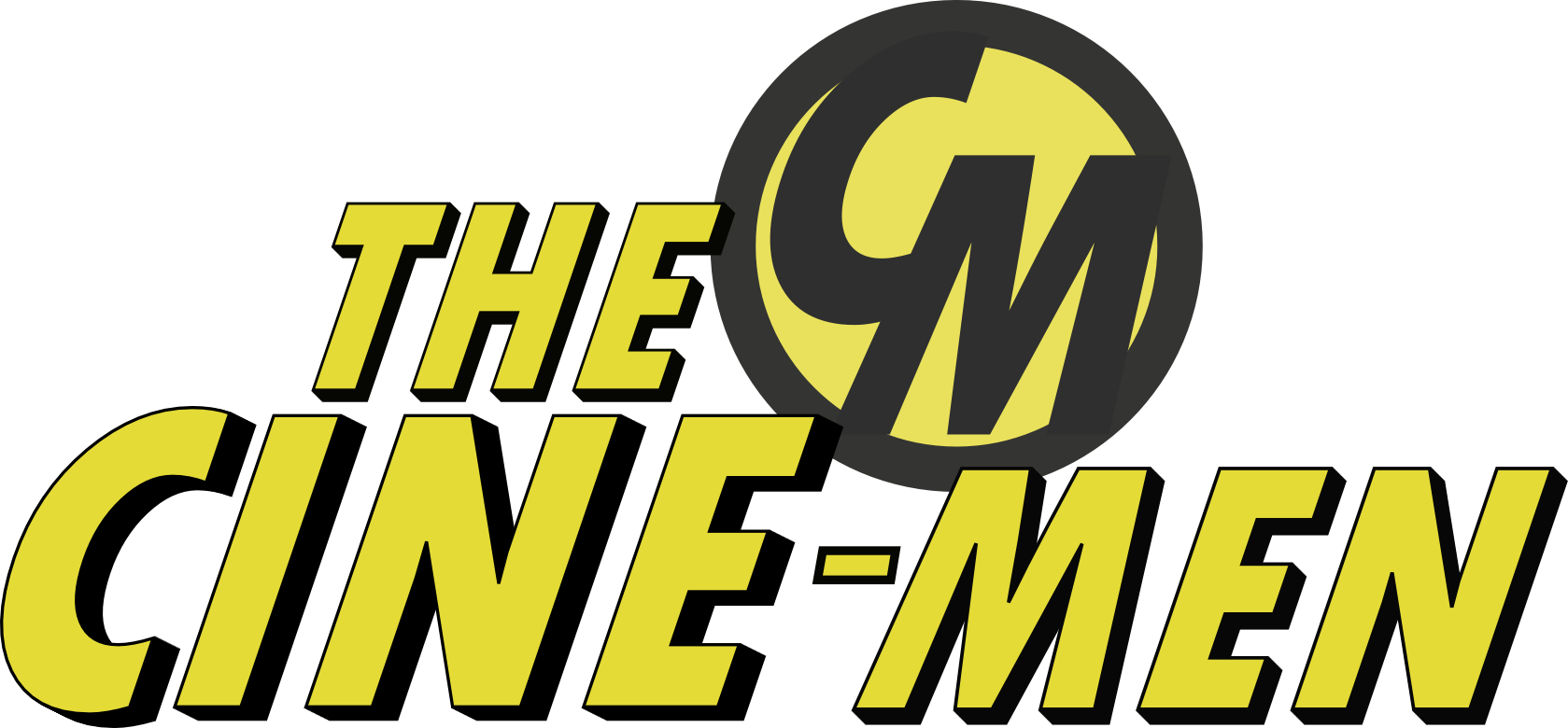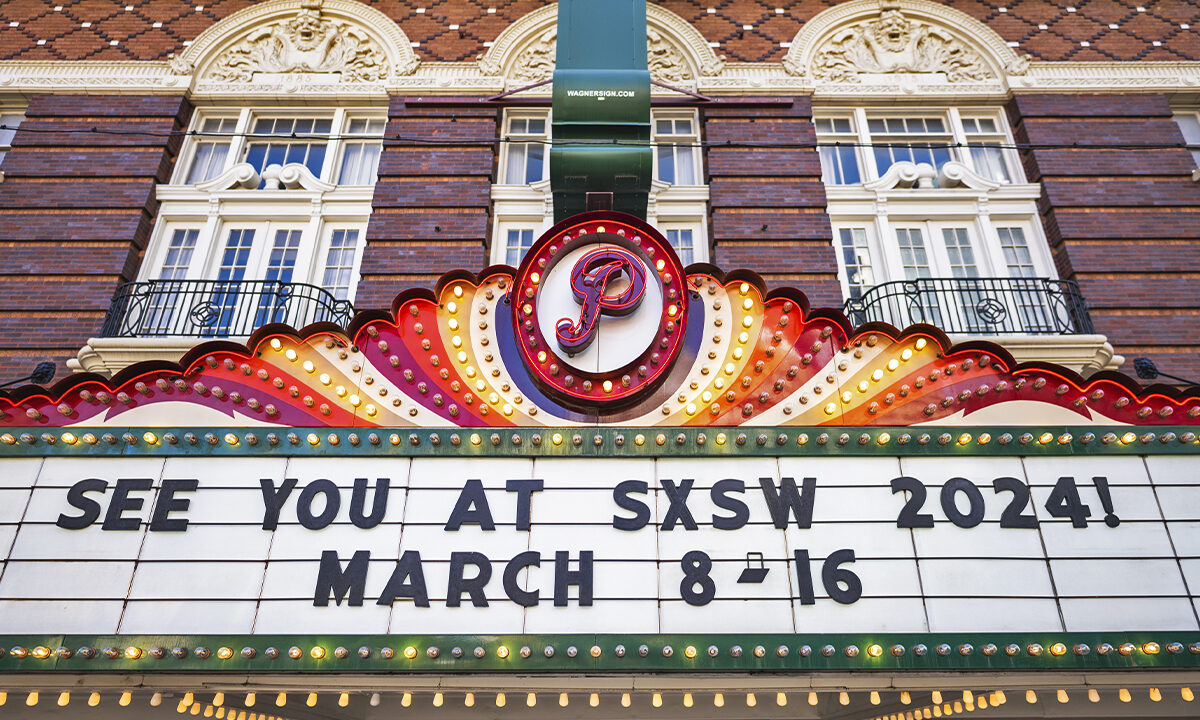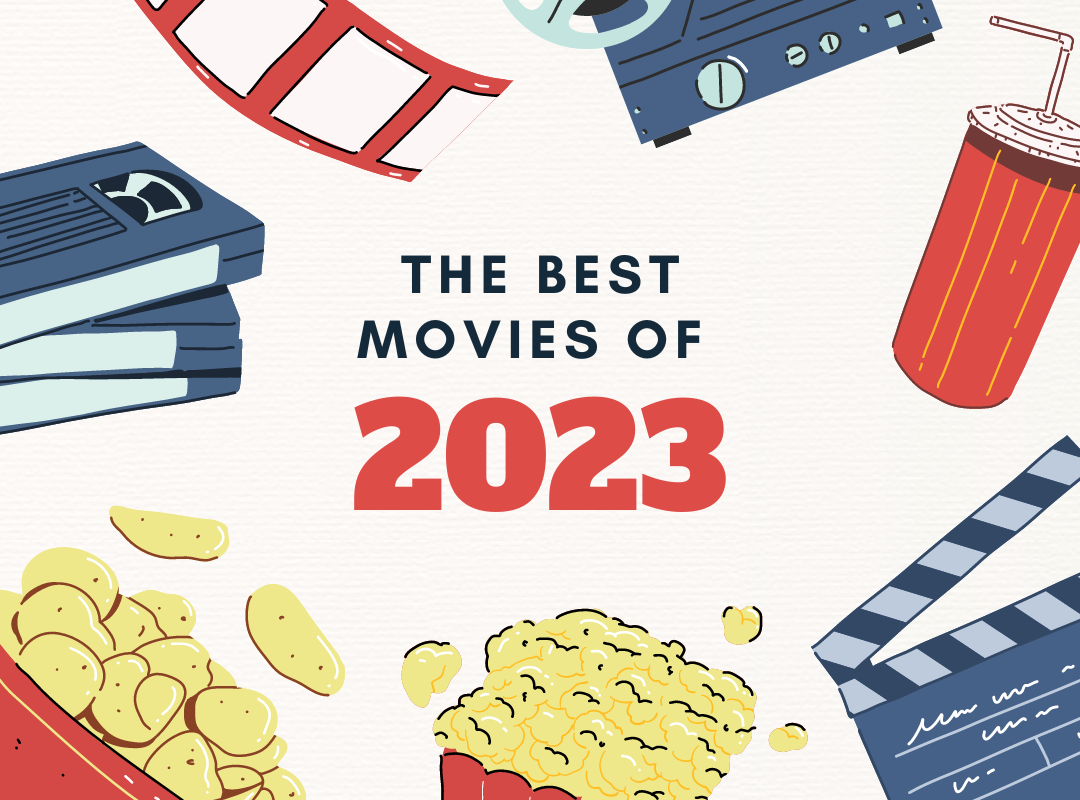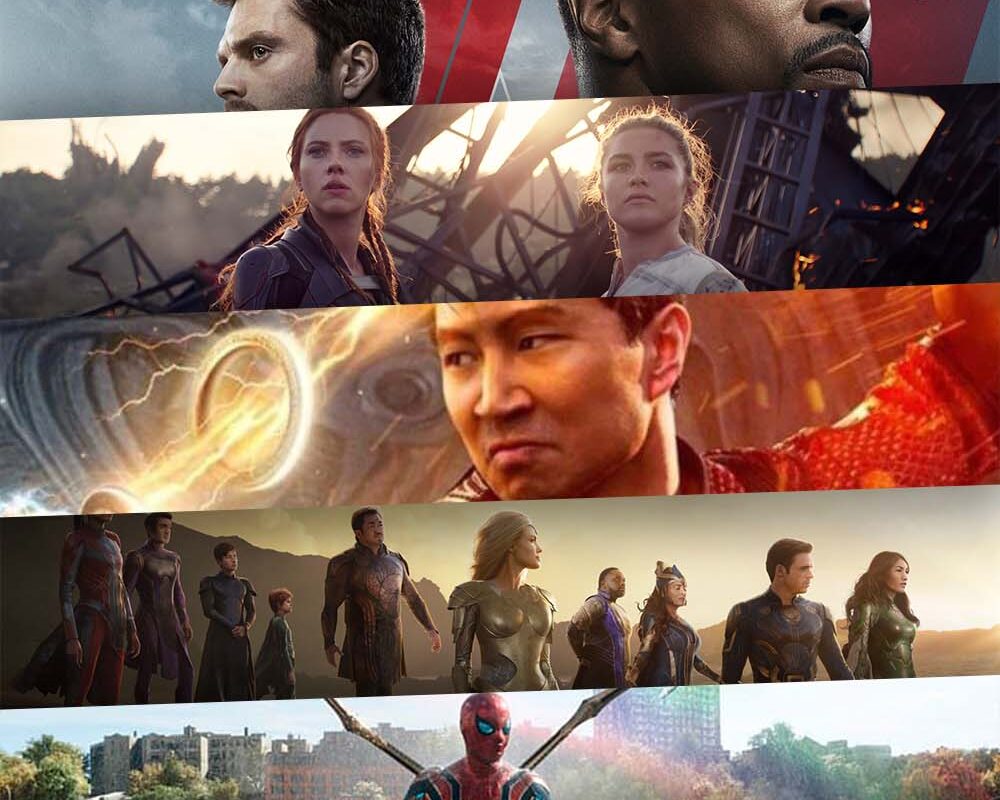
Oddity follows a woman who is attempting to uncover the truth behind the death of her sister with the help of a wooden mannequin. It may sound like its title, a bit odd, but director Damian McCarthy who is responsible for 2020’s creepfest Caveat is out to bring the scares again with his new film. Cine-Man, Brian Taylor caught up with Damian at this years SXSW.
Brian Taylor: All right. All right. So, the first thing I want to ask you is, when did you come up with the story and the idea for Oddity?
Damian McCarthy: So, I write all the time. And I just think, as a writer, you always have these ideas like, that will be a good scene, but I can’t build a movie around the whole thing or that will be a good scare or that will be a good segment or set piece and they can kind of sit there for years and they never get developed any further. What Oddity was; it was a mix of a lot of characters and old ideas that I really liked and I just put them all together. They somehow seem to come into this script and form this story. You know, like just a big mix of, like there’s elements of slasher in it, with the murder. But, I never wanted to make a full slasher movie, but I thought, well, a kind of a slasher moment in the scripts, kind of a grizzly murder would work quite nicely. Obviously there’s ghosts in the film, there’s a bit of a mystery, there’s some gas lighting characters and villains and that physical threat. So, it’s just a big mix of old ideas and sub genres of horror that I like just trying to weave them all into one story, hopefully in some kind of cohesive narrative.
Brian:Where was your starting point in the story? The idea, I guess, I should say.
Damian: The real idea was, again, around our main character, Darcy [Carolyn Bracken], being a blind psychic that can read objects and has all these very dangerous, haunted items. It really started with her, you know? I’m kind of surrounding her then with these characters and trying to have her take revenge in this kind of supernatural way. And then everything kind of built out from her; all those other ideas that I talked about that I could never find a home for, they all kind of seem to fall in around her.
Brian: I think location plays a big part, and this location is mainly in this house that you have most of the film taken place in. And where did you find this lovely, perfect, just looks like a house you don’t want to visit?
Damian: The house is in Bantry House in West Cork. And it’s this grand, old house on this large estate and at the back of the house were these renovated stables. I had made one feature film before this called Caveat, and I had built all of my sets inside in that room, where this story takes place. And I had just spent so much time in that room, I said, well, if you actually got rid of these sets, the room itself is very interesting. There’s nothing cozy about it, it doesn’t look like a real home. But I thought, maybe somebody like Ted [Gwilym Lee], somebody that’s not a very warm person and not a guy who seems like he cares much for comfort in that kind of relaxing way, and I thought, well, you could put that character; he looks like he’d live here. The kind of idea that somebody wants to live in a castle almost; it made sense. So it was very much written around and written for that location. Our production designer, Lauren [Kelly], she gave it this very kind of black leather and masculine kind of feel to it. The location was very much written for it.
Brian: The location is gorgeous. What you did to the house is like, it doesn’t look very like, you know, there’s like a little life into it, but you can see a certain type of person who would do exactly that, like out of that space. So, the atmosphere is really important to this story, you know? How did you go about creating and conveying it to the audience?
Damian: I suppose everything I’ve made is all atmosphere. It’s something that I’m maybe not aware of. But, I’ve been told that the atmosphere in my short films and in my first feature film, that there’s kind of an atmosphere that something’s gonna happen, that feeling of dread, which I do like. And that’s all building up to a scare, building up to something, we know that something’s gonna happen just the way it’s shot, or what you’re framing, or with developments in the story. So it’s something I’m aware of, to just try to create that atmosphere very slowly and build up to it.
Brian: Do you have particular ways that you like to create that? And is it in long shots, or is it not not focusing maybe on something? So it gives people not the idea of, like, no, look here, because then you’re kind of looking at the light. I mean, I’m asking because I’m curious.
Damian: Would it be like in terms of ultimately, the scare?
Brian: The scares and as well as just the overall dread feeling, that it kind of, you’re just looking at a wall or staircase, and you’re just waiting for something, like the shoe to drop.
Damian: I mean, so much of that is just a gut instinct. Maybe it’s kind of hard to explain, you know. Like, for me, it’s just that wide shot where nothing’s really happening; there’s something about it, where you go, “okay, we’re settling into something here” and the camera’s going to get tighter. Take the death scene, for example, that starts so wide and it’s so quiet and by the time we get down to really where we’re ending up, when we really get down to the end of that scare, we are right here in someone’s face, you know. We’ve gone from this extreme wide and we’ve worked all our way down to an extreme close up. That’s a way that that tension gets built and that atmosphere gets through, because you feel like you’re closing in on this character all the time, you know, that probably helps.
Brian: Well, that makes sense. I guess I could see where it can be hard to say words as much as you are visually because visually, you know what you want.
Damian: Of course. And sound is obviously a huge thing with that, your sound completely changes the atmosphere like when things are getting quieter and quieter. And I think even because the nature of a lot of horror films the last few years, there has been that real silence before there’s a loud bang. So even if you don’t give them that bang, loud noises isn’t going to make something scary, you know, it’s just startling when you hear it. But I think because you can kind of weaponize that against the audience and you can make things okay. We’ve gone very quiet, which means, potentially the audience knows what to expect, but then it’s to somehow try to subvert that, or do something interesting when that, when that bang finally comes.
Brian: You mentioned, when you first talk about the story, that you wanna have aspects of a slasher. I’m curious on that decision you made with the beginning and that first part of the story, which is, you don’t really show a killing. You show something before, and then there’s a kind of a cut to an aftermath. Was that always the idea not to show something brutal?
Damian: There’s two things with that, because there is a murder in the film, which is kind of what kicks things off and there’s two reasons. One, because all the violence is offscreen. But even if I wanted a show, I don’t think there’s anything that I could have done. There’s people who do that violence so much better than I would. You know, Gaspar Noé or these guys who can do these sudden explosions of violence. They’re really grizzly and shocking. I don’t think I have that in me to try to top those guys. Plus, I think, tonally, it really would have thrown the film off. Like, if somebody gets beaten to death, and if you show that in the movie, it is quite shocking. If you wanted to go that way, you wanted to set up this is kind of a spooky horror and it’s all about atmosphere and it’s all about tension. But, then suddenly, there’s a shocking blast of violence in the middle. I don’t think it would have worked at all so I found it was always the idea, was just right at the start of the violence and then just get past it in a way that felt a little bit more shocking, just to go from this clean image to suddenly a very bloody aftermath. And it’s like, whoa, okay. Without the camera repositioning and the camera was locked. And then suddenly it’s like, oh, that’s quite hopeless; there’s nothing we could have done to have helped her as we’ve just completely skipped past it. Whereas if we’d seen this bludgeoning, I don’t think it would have worked.
Brian: No, I actually love the thought. I think you’re correct in the sense of like there are movies and they wanna set that tone and they wanna be super violent and that’s fine but it’s not always needed. Especially to convey the intent with what you wanted to and I think what you did and in any of the scenes that ever happened offscreen really, really helped. It was great.
Could you tell me what was the toughest scene to write?
Damian: Let me see. Possibly that central back and forth between Yana [Caroline Menton] and Darcy sitting at that table and going back and forth like that because Yana has to kind of just accept that she’s here for the night with this person. So that conversation had to drift from a little bit of get to know you chit-chat to these accusations then coming from Darcy, and there’s a lot of exposition that she’s leading up to the midpoint. There’s a lot that goes on with that scene and you’re trying to weave in and out of flashbacks, which could potentially be slow. That one was probably the trickiest because it’s the midpoint of the movie, and I feel like that’s where everything changes; that the person you thought was the villain, you suddenly realize isn’t, you’re trying to get to know these two characters a little bit more, your clues for the murder, all these things, it’s all there. There was more that we shot for that but again, once you get to the edits, you go, “well, I don’t need that.” And you keep trying to tighten it up. That’s probably the one, that midpoint. But I think the midpoint in scripts or in films is the thing that should be paid most attention to anyway. Because the middle of the movie where you’re going, okay, maybe they’re getting a little bored of this, it’s getting slowed down a bit. So that’s where I feel like, okay, this is where we need to shift things and start to head towards your third act and into the finale.
Brian: I’ve always heard that at the 60 minute mark of a film, that something always happens. It may not be right at the dot 60, but in that area.
Damian: That’s the idea, yeah. But if you follow these like screenwriting rules or these screenwriting ‘save the cat’ tpye books I mean, you don’t have to follow them by the page or by the running time. But certainly those rules or those guidelines, they do help. For me anyway, I try to follow them as closely as I can. I was using it for that midpoint, it’s very important that the second act, you know, breaking into the second act and all that kind of stuff. It’s all useful.
Brian: What about the toughest scene to shoot?
Damian: Toughest scene to shoot? I guess, for practical reasons, maybe the end where the wooden man finally starts moving, and you’re heading towards that kind of horrific third act; that was it. But it was only the practicalities, because we had a stunt team, Ivan [de Wergifosse], who played our big wooden man, he was completely blind, just because of the nature of the costume, so there was a lot of minding him, that he wouldn’t get hurt doing it. That was it. And it’s probably just trying to work out in my storyboard, everything so I knew exactly how the chase was gonna go around the house. But that one was probably the one that needed the most care and to stop and to do it slowly and to do it properly. Still wasn’t difficult by any means, but just you had to be a little bit more locked in. I felt with the storyboards and what you could do. I had a storyboard of the sequence and I gave the storyboards to the stunt team, and I said, “here’s my ideas here, here’s how I think we’d like to shoot it.” And they were delighted with that, because they were going, “oh, I never got the storyboards where they say exactly how beat by beat it goes.” And so they were very pleased with us.
Brian: Well, this is your second feature. So I was curious, you just mentioned storyboard, have you found a method that you kind of rely on? Is it using storyboards? Is it a lot of notes? What do you do when it comes to writing a screenplay and also to convey when you shoot the film?
Damian: So, the way I do it I do so many drafts with the scripts and when I kind of feel like I’ve gone as far as I can, I can go with the script now. Then I start sending to my agents or to producers, wherever, to get some feedback on it. And then if we get it to a point where it’s like right now, let’s film this, this could be our locked draft. I’ll always say that once I storyboard it, I really believe in storyboarding, so once I storyboard the film, I’ll go back then and do another draft off the storyboards. Because you can see, even as you’re doing, like a dialogue conversation. And if shot reverse shot, or however you’re filming this, you can go like, this is, these panels are starting to look quite dull. You know, this is getting a little slow, or even scares, you’ll just start drawing something or making up a scene that hadn’t been there before. The storyboards will always give me that final draft in that shooting script. And then, of course, you show up and you go, like, “well, here’s, here’s my plan, here’s how would like to film it.” But then, of course, the actors have ideas for movement and blocking. If you’ve got a good cinematographer, which we did [Colm Hogan] on this, he can kind of take two or three shots that you’ve storyboarded, and he can go, “well, here’s how we could blend these together that saves you time and it gives the film a little bit of movement. So, yeah, just kind of showing up with my ideas, just in case I go blank on the day. I think [Steven] Spielberg can show up and know nothing about how he’s gonna shoot it and just make it up there on the spot. But for us amateurs, we gotta sit down a few months beforehand and really plan it out and go, “okay, I think I think this would work.”
Brian: That’s actually fascinating, you saying that, because you always want to have a kind of peek into this creative process that is making a movie. And what you did to describe it, it just shows how much each person in each part of making this film, how they add and how they bring everything together to make a film like this and like any great film.
Damian: Oh, yeah, absolutely. I mean if I wanted to just tell my story exactly how I want to tell it, I’d just be a novelist, you know. If I was a better writer, I would just write my books and go, “okay, I’m finished. There’s a story, read it and use your imagination.” But, you know, even as a screenwriter, you spend so much time just on your own. So I can’t imagine being a novelist. I mean, you’d be completely isolated. So at least with this, you’ve got a year of working on a script alone, staring at the wall. And then it’s great when you start working with HOD’s [Heads of Departments] and actors and all the way to a festival like this [South by Southwest], you know, talking to people, like yourself, about movies and I think it’s much healthier, I think, not to spend so much time alone.
Brian: Very true. Now, I really like the performances but what I’m really curious about is about Dani [Carolyn Bracken] and Darcy. So, was that always planned to be played by the same actress or did you have other plans?
Damian: Always by the same actress. It’s just that the idea that they’re identical twins and visually, it’s interesting. And it allows me to kill a character, you see her die, but then she’s back again. So, as they look very different, their hairstyles, their costumes, their mannerisms; everything about them is different. But it was always the plan.
Brian: That’s awesome. All right, last question for you. Your first two films [Caveat and Oddity], you’ve had wooden figures as kind of key figures in your stories. Can you tell me, is there a reason for your kind of fascination with the wood; is there something behind it and in your way of storytelling?
Damian: What am I thinking? The first?
Brian: Was it the bunny rabbit?
Damian: Oh, yeah. It was kind of an old, matted, furry kind of antique toy. Now, we had that made. I just like it. I guess it’s just an aesthetic that I find interesting. That kind of old decayed. It would be like looking at an antique and say “but who built this and who was it and who was it made for?” You see some old children’s toys, and you go, “I’m sure back then it was a child would love this, but, but who would play this? Like, what? What child today would play this?”Because it’s terrifying, you know. And that’s not just in our movies; you go on eBay or something and go, here’s a doll from the 1950s and it’s the most terrifying thing ever. But, I’m sure back then the kids would have loved this and that’s always what’s in the back of my head. Like that wooden man, “who built that?” Even some of the props that we have in the shelf that are haunted they’re all things I’ve either had in my movies or I’ve picked up at flea markets. There’s like a Jack in the box clown but I got it at the flea market in Spain and you see it, and it’s deeply disturbing. You wouldn’t want this on your shelf, but it’s for kids, you know, back in the 70s or something. Okay, like, I guess let’s put that there. It’s just something that I really like. I mean, a big influence for me, just in terms of that worn, strange look was that old Jim Henson movie, A Dreamchild. It’s kind of like Alice in Wonderland, but there’s the Mad Hatter and the rabbit in that and it’s just the design of them and the look of them; It’s just strange and kind of something really off about it. And it’s not a horror movie at all, but it’s just that design, it’s always at the back of my head when I’m talking to production designers, property masters, or whoever’s gathering this stuff for it.
Brian: I couldn’t ask for a better answer for that. That’s exactly why I wanted to hear. I was just curious because you see those things. So, thanks a lot for your time. I appreciate it.
Damian: Well, thank you very much.



